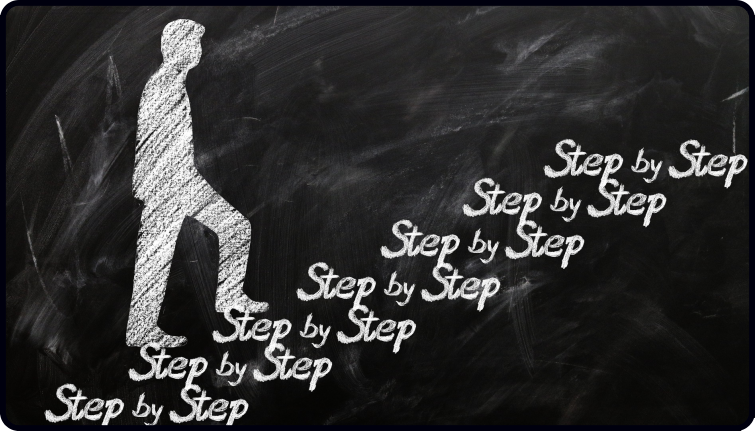Here are two more interesting emails I have got lately.
I hope you find the emails and my thoughts useful…
Today we are talking about tips on playing chords better and a very cool little two-step plan that can help you make more progress in less time…
Email #1
“Dan, my name is Jim, I am 79 years old, I have a Zager full size acoustic, and have been trying to learn to play for a little over two years. I am only 5ft. 4in. tall and have small hands. I really concentrate on playing the chords correctly, but I continue to have my fingers touching other strings and creating bad sounds. I just can’t seem to play a clear sounding chord. I feel like my fingers are not large enough or long enough to correctly play the chords. Any suggestions?”
Jim
This is pretty common for beginners, so if you feel like this, please don’t stress.
Instead, follow the advice I gave to Jim.
Some of these things might not be what people want to hear, but they work…
Try using a capo – practising chords with a capo on fret 5 can help. The frets are closer together and this can help you get in the correct position and make playing the chords easier. Once you can play a couple of chords here, move the capo to fret 4, then fret 3, etc. until you no longer need the capo. Moving the capo down the fretboard in stages will help you stretch your fingers gradually.
Sit in the classical position – I talk about this a lot. The classical position angles the neck upwards and can allow you to get more on your fingertips without having to contort your wrist. This can help you position the fingers easier.
Use “four-string” chords – Instead of struggling with big chords, you can strip them back a little. For example, a G Major. Instead of playing the big six-string version (which can be a stretch) you can play a four-string version where you only play the 3rd fret of the high E string and strum four strings. This means you only need one finger to play the chord. All struggling beginners can try this, and it can help you get started with chords.
Focus on playing melodies as much as chords – all beginners need more dexterity and chords require a fair bit of dexterity. Playing fun riffs and melodies will help your fingers become nimbler and this, in turn, will help with your chords.
Go to a guitar shop and try out ten more guitars to see which suits you – As I said to Jim, it may be that the guitar is simply too big for him and doesn’t suit him (hard to say for sure though). Either way, it’s definitely worth trying out multiple guitars. If you’ve only ever played one guitar, it’s pretty hard to tell if it’s one that truly suits you.
There’s some advice you can try today for sure.
Try at least a few of the suggestions above if you struggle with chords.
Anyway, onto email #2…
Email #2
“Dan,
I purchased a number of your books a year ago with all good intentions of getting back to learning guitar. Then, once again, life went sideways. Now, I’m back with new resolve that I will make it work this time.
So, where to begin?
I’m familiar enough with notation, reading music, technique that I don’t want to spend a lot of time with that right now. I want to play! Since I have some background with classical technique, I thought I’d start with Carulli’s Andantino.
I’m giving myself 30 days to commit each new song to memory and play it without errors.
Does this sound like a reasonable approach to re-start?
Many thanks!”
Dave
This is an interesting question for sure.
So many of us have started learning guitar, but then life got in the way.
Glad to hear Dave is back and ready though.
Having a plan for 30 days is always a good idea.
Most people don’t do this, but I’m a big fan of setting clear goals in specific time frames.
It stops all the “wishy-washy” floating-around practice that is common in the land of guitar.
In terms of what Dave suggests, yep, I like that plan.
He wants to learn a classic song which it sounds like he should be able to play.
As he’s a fingerpicker, I’d also supplement that with something that will help him improve his technique (everyone should focus on this too).
If you are struggling or coming back to the guitar, you can do the same and have a two-step plan like this:
That is:
Step 1 – Learn a stunning song that is not too tricky
Step 2 – Work on your technique to supplement this
Do that for 30 days and you’ll see improvements.
If you want to learn some classic songs (including the one Dave mentioned) and get some powerful technique-building lessons, you may want to check this out:
The Fingerstyle Collection – learn 18 beautiful arrangements and improve your technique
It’s a course featuring 18 beautiful songs with supplementary lessons purely on building your technique.
Simply pick a song, work on it, and keep coming back for more. The good thing about my courses is once you get them, you get lifetime access to them.
You can easily use this course to fit with the above two-step plan.
Have a fun day of practice!
Dan Thorpe
Guitar Domination
P.S. This post was originally taken from Dan Thorpe’s private email list. To get blog posts like this sent to you which are full of great tips to make fingerpicking, strumming, and learning guitar more enjoyable (especially if you are over 40) join Dan’s list. It’s 100% free, HERE.


Add Comment